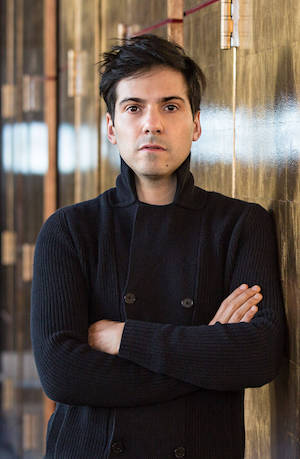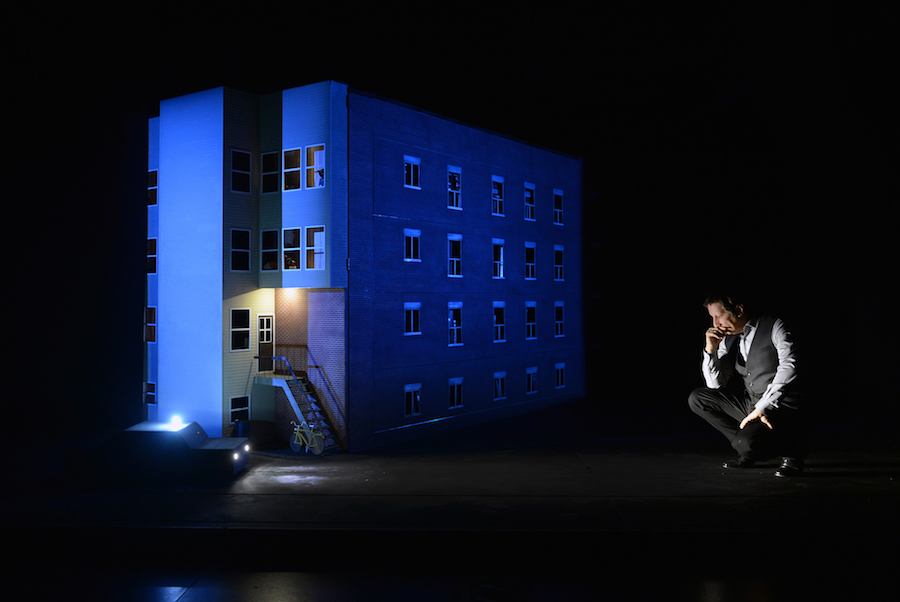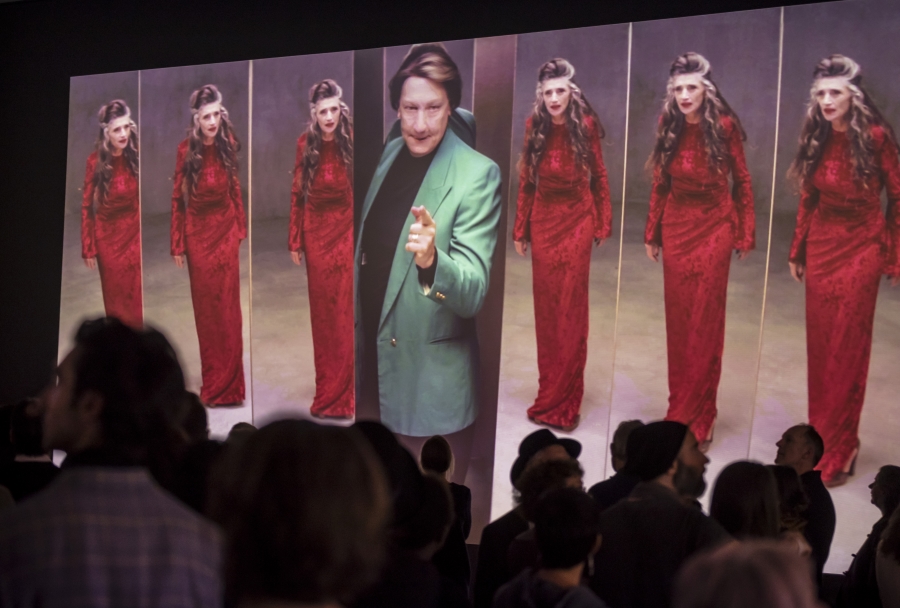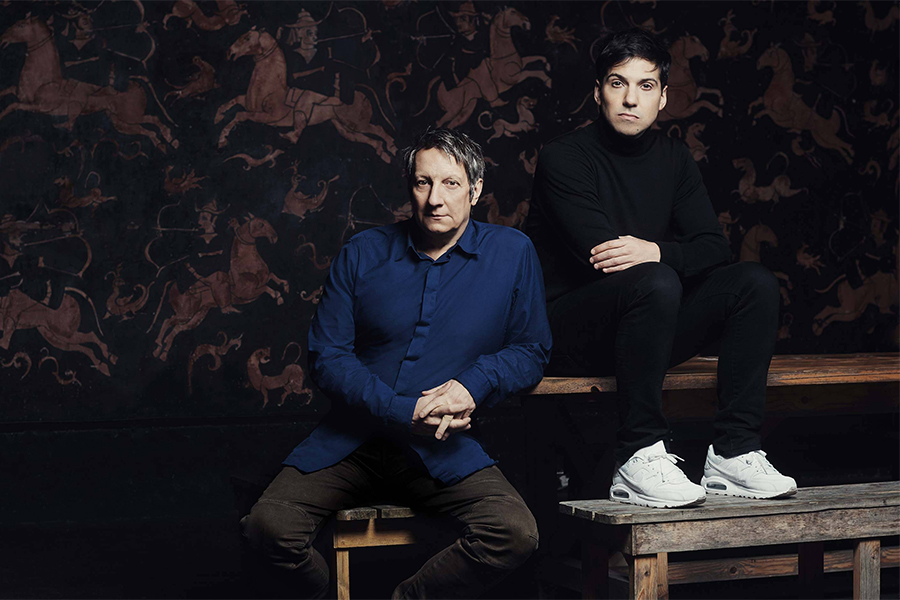The Rolex Mentor and Protégé Arts Initiative pairs a young artist with a veteran artist in a similar discipline for a year-long mentorship program. This year, Argentinian theatre artist Matías Umpierrez was paired with master theatremaker Robert Lepage of Quebec City, Canada. In their time together, these two multidisciplinary artists crossed language barriers, cultural divides, and borders, with projects melding opera, film, music, movement, and theatre. The 2016-17 program culminated earlier this week as part of the Rolex Arts Weekend in Berlin, Germany.

Umpierrez’s works include a virtual theatre piece featuring actors performing live from different parts of the world, and site-specific performances from factories in Sâo Paulo to mountaintops in the Pyrenees. “My projects move around the borders that exist between performing arts, visual arts, and cinema, activating the dialogue among audience, stage, speech, scene, and territory,” he says. It is fitting match for Lepage, whose company Ex Machina, based in Quebec City, is known for fusing different art forms to create transdisciplinary, global works.
In addition to the opportunities to travel and to observe Lepage, Umpierrez knew that the mentorship program would also allow him to work on his English-speaking skills. “I’ve been to New York several times through the years for different projects and I always asked for an interpreter,” says Umpierrez. “Then I was nominated for the Rolex program and I realized that English would be my main bridge to be able to establish a relationship with my mentor.”
In Lepage Umpierrez found that a colleague eager to build and cross similar bridges. “When I met Robert, I discovered a great artist, but I also found a person who was very eager to learn languages as a means to discover new worlds. That was a great lesson for me, because we both create projects in global collaborations, and languages are a fundamental tool. In the end, we found ways to communicate as I was learning the language, and I think the most beautiful thing about working in art is that two artists not only communicate with words, we also do it through gestures, or by having the same sensibility when it comes to admiring the same situation.”
The culminating trip to Germany was one of many journeys that Umpierrez took as part of the mentorship program. Inded, he circled the globe in 12 months, following Lepage and his work to Tokyo, Quebec City, Banff (Vancouver), New York City, Paris, Bergen (Norway), Helsinki, London, Amsterdam, and Madrid. Umpierrez shadowed Lepage as he staged the U.S. premiere of Kaija Saariaho’s L’Amor de Loin at New York’s Metropolitan Opera, and watched as he illuminated the love story with thousands of undulating LED lights onstage. Also during the mentorship year, Umpierrez observed Ex Machina’s tour of 887, a story of Lepage’s childhood, starring Lepage. They travelled to Helsinki, Finland, where Lepage spoke at a conference.

Looking back at the year, the experience of watching Lepage work solidified Umpierrez’s own methodology. “I’ve always worked on different projects at the same time,” he says. “I was never sure if that was the right way, but I understood that it was the way it was organic for me. When I met the work dynamic of Ex Machina, I discovered that it was directly related to this way of working—they create several projects in parallel, with processes that can take up to two years in some cases.”
Ex Machina approaches projects with investigative workshops and ensemble-led research. “This type of collaboration allowed me to get some distance in order to come back to my projects with new perspectives and in a more organized way,” says Umpierrez. He also discovered that interdisciplinary artists have many things in common, despite a generational divide.

For his part, Lepage was eager to participate in the program because he never had a mentor himself. “The reason I was so interested in doing this mentorship is because I’ve never experienced it myself and I wish I had,” says Lepage. “It’s important for people to have access to other people’s work, whether they are young, old, or mature in their craft, and that they get a chance to exchange views about ways of creating and to see the work process up close.”
And while Umpierrez gleaned insight from observing Lepage’s method of developing and presenting work, Lepage learned a lot from his mentee too. “One of the exciting things about this mentorship program is that when you’re an established artist, you’re mingling with other established artists. You feel you’ve seen it all, then suddenly somebody like Matías comes along. He’s into social media, he has his own concept of what theatre should be, what installations and creative events should be —you feel at the same time very jealous. It’s putting me up to date on the new trends.”
Some of these new trends were on display in Umpierrez’s culminating project, The Museum of Fiction, an audiovisual adaptation of Shakespeare’s Macbeth, which starred Lepage. “It proposes a dialogue regarding the shift that dramatic action can provoke in a museum-collection-conservation-exhibition-time system,” Umpierrez says of the project. “By challenging fiction’s temporal-spatial limits, it tries to find a possible ‘museum-ification,’ or a unique way to keep the dramatic construction for the present and future collective memory.”
Of all his trips for the mentorship, Umpierrez points to two that were particularly special. “One of them was our first meeting during the mentoring year, which happened in the city of Tokyo—I had never been to Japan,” says Umpierrez. There he learned about Ex Machina, and Lepage introduced him to Japanese culture. On that trip, Umpierrez experienced “one of the most exciting theatrical events ever,” a live performance of Kabuki theatre.
He also points to the trip to Helsinki, the last trip of the mentorship program, which brought the experience full circle. “We dined in a restaurant with huge windows, and at a time of the year where the night in Finland is very short, so it felt like a long sunset,” recalls Umpierrez. “That dinner was very special, we talked as mentor and protégé, and also as friends.”
“I’d heard of this mentorship program before and I always imagined it being like a usual philanthropy, you know,” Lepage admits. “You like an artist, you try to encourage him, you find him, or you help him out. But this is much more sophisticated and much more thorough. It’s a real way to accompany an artist—and it is not just encouraging his work personally, it’s encouraging him as a human being.”


